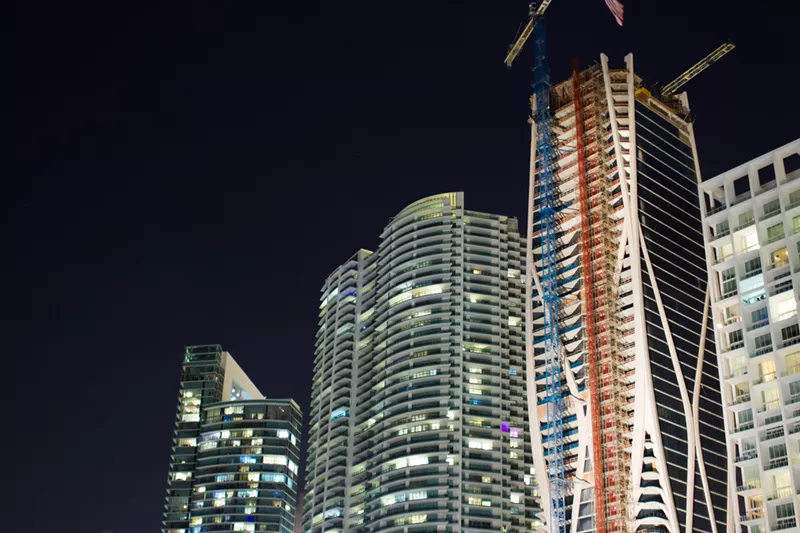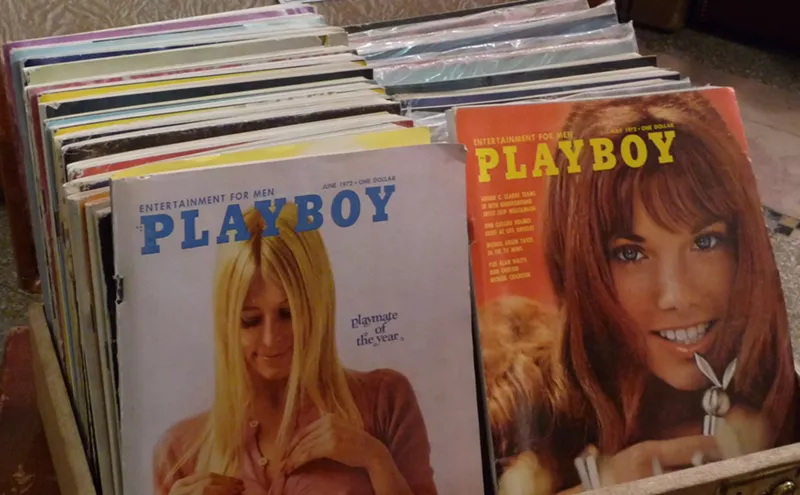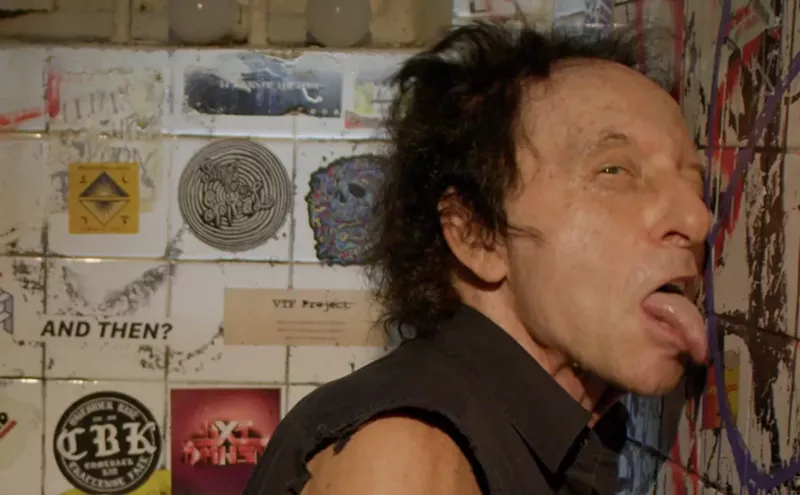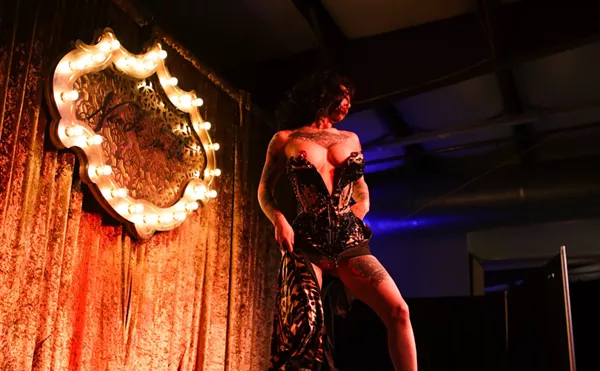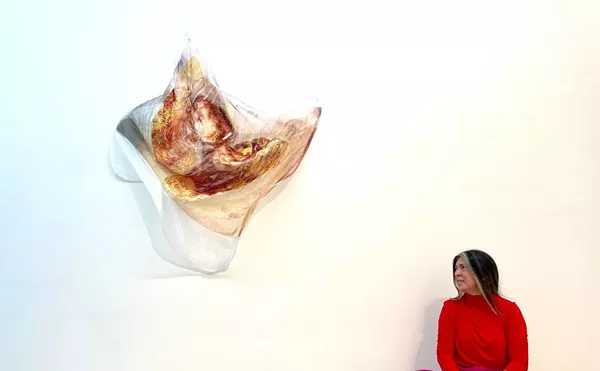Designed by Zaha Hadid, the Pritzker Prize-winning architect who passed away in Miami nearly two years ago, the Scorpion Tower holds a special place in the city's skyline. Hadid was a visionary, and this tower was her last residential project, a place where people would live in her own home away from home. She had family here, she had roots here, and now she will leave her legacy here.
"This is the culmination of 30 months of construction since we came out of the ground," says Gregg Covin, one of the developers of 1000 Museum. "To reach the point where we've topped off the construction and halfway through we lost Zaha, this is an important event for us."
1000 Museum, whose first tenants will move in by the end of the year, is not just another downtown high-rise. The building is one of the most complex structures ever built, according to Covin. Pieces of the exoskeleton were constructed in Dubai and shipped to Miami for assembly. Yet the exterior was still completed on time and on budget.
The building took on even greater significance in the wake of Hadid's death.
"Ever since Zaha passed, it became a little bit more important to finish the building with the vision that she set out to achieve here," says Louis Birdman, another one of the primary developers on the project. "We see ourselves sort of as shepherds for completing this project as she envisioned it."
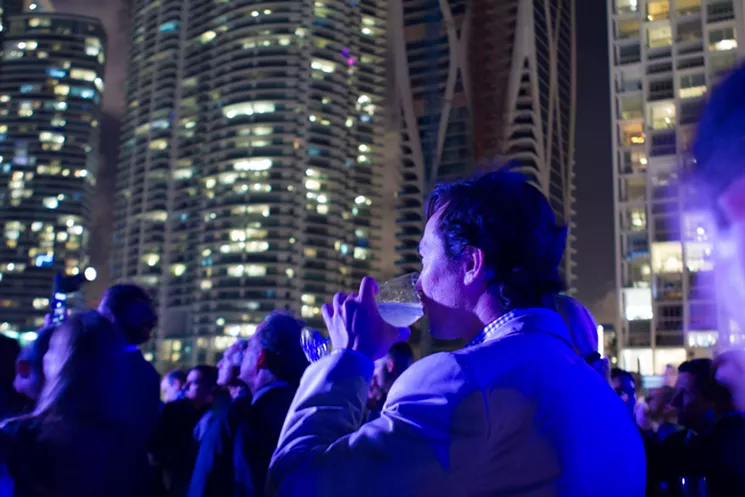
The rooftop of the Frost Museum of Science was abuzz with revelers celebrating the milestone.
Photo by Travis Cohen
The swooping, curvaceous lines of the exoskeleton, the graceful way the balconies bulge from between prefabricated concrete at the corners, the almost otherworldly quality of the lower levels — the Scorpion Tower is unique in the very best ways. The building is a wonderful piece of architecture, but what it means to Miami might be just as notable.
"What I think it means is that Miami has grown up and that people here appreciate greatness and appreciate quality architecture now," explains Brad Meltzer, president of Plaza Construction, the company responsible for contracting and overseeing the construction of 1000 Museum. "A long time ago, 25 years ago, you would never see a building like this in Miami, and now all the great architects from around the world want to have their mark on Miami. They believe in Miami as a city; they believe in the culture."
The Scorpion Tower has become a prominent piece of Miami's burgeoning cultural nexus. Standing across Biscayne Boulevard from Museum Park, Pérez Art Museum Miami, and the Frost Museum Science and in close proximity to the American Airlines Arena and the Arsht Center, the building is the latest development in what Covin calls a 20-year transformation of downtown.
And in Meltzer's eyes, 1000 Museum and the growing area of which it is a part will be important to Miami's history.
"I think what we're seeing is the blossoming of a city — we just happen to be living in it," Meltzer says. "You come back to Miami in 200 years, and people are going to come back to this time and say, 'That is when Miami put itself on the map.'"

